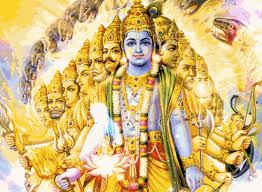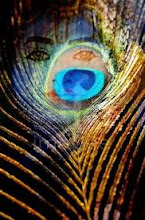BRAHM-SAMBANDH
RE-ESTABLISHING RELATIONSHIP WITH THE SUPREME GOD,BHAGWAN SHRIKRISHNA
The Background
Shrimad Vallabhacharyaji was Hinduism’s principal Philosopher, foremost Mystic, well known
Spiritual Leader and a Krishna Devotee. He was last of the Acharyas (Scholars) of Hinduism who most
logically explained the relationship between The Supreme God (Brahm , Bhagwan) ShriKrishna, The
Universe and The Individual Soul through His philosophy of Pure Non-Dualism (ShuddhAdvait
BrahmVaad). The philosophy of Non-Dualism explains that the universe and the individual souls are
parts of The Supreme God - The Supreme Being – The Supreme Soul. It further explains that the
individual souls keeps coming out of The Supreme Soul (Bhagwan) like the sparks that keeps coming
out of an eternal fire. And just like the sparks of a fire, the individual souls have come away from The
Supreme Soul, disassociating themselves from The Supreme. This disassociation makes the soul forgetful
of its relationship with The Supreme Soul – Bhagwan ShriKrishna, The ParBrahm.
Shrimad Vallabhacharyaji came to this world to institutionalize PushtiBhaktiMarg and to guide Pushti
souls towards Bhagwan ShriKrishna by re-establishing their relationship with ShriKrishna.
This re-establishment of soul’s relationship with Bhagwan ShriKrishna is carried out by administering
The Brahm-Sambandh Mantra to the individual souls. This Mantra was given to Shrimad
Vallabhacharyaji (Shri MahaPrabhuji) by ShriKrishna (ShriNathji) Himself at midnight on the eleventh
day (Ekadashi) of the first half of the month of Shravan in the Hindu year 1549 (1493 AD). The day is
known as Pavitra-Ekadashi and is celebrated as the Day when PushtiBhaktiMarg was institutionalized.
Shri DamodarDas Harsaniji was the first vaishnav to be initiated into PushtiBhaktiMarg by receiving
Brahm-Sambandh from Shri MahaPrabhuji.
The Brahm-Sambandh Mantra
All mantras always have some norms associated with them. These norms dictate to whom The Mantra
can be given and how it can be given. They also dictate when, where, how and how many times a
Mantra may be recited by the receiver of The Mantra. Also, the text of The Mantra is given to the receiver
only by The Guru. That is the reason the text of The Mantra is not cited here.
Brahm-Sambandh Mantra can be recited in front of ShriNathji’s deity (or any other manifestation
(swaroop) of ShriKrishna as accepted in PushtiBhaktiMarg) only after taking a bath and wearing clean
cloths.
(“Nam-Nivedan Samskar” is different then Brahm-Sambandh initiation (Diksha). It is given by a
PushtiBhaktiMargiya Guru who recites the Ashtakshar Mantra “Shri Krishnah Sharanam Ma Ma” three
times in the recipient’s ears and blesses him with a Tulasi Kanthi. “Nam-Nivedan Samskar” is not an
alternative to Brahm-Sambandh initiation.)
The Meaning of The Brahm-Sambandh Mantra
God). I do not experience the joy of separation (the yearning to meet ShriKrishna) from Him. Such as I
am, I willingly dedicate (eradicate any emotional dependence whatsoever from) my Body, my Senses,
my LifeForce, my AntahKaran (Mind + Intellect + Ego + Consciousness) and their attributes, my
spouse, my home, my children, my relatives/friends, my wealth, this world & the other world that I
call mine, my conscience and everything else I call mine to ShriKrishna. I am your servant.
Krishna, I am Yours ! Krishna, I am Yours ! Krishna, I am Yours ! “
The Giving of The Brahm-Sambandh
OR on His behalf, by His direct descendents known as “GuruDwar ” – a gateway to Shrimad
Vallabhacharyaji. Brahm-Sambandh is given in the morning during Shringar Darshan either in front of
GuruDwar’s Thakorji or in front of Thakorji in a PushtiMargiya Haveli (Temple).
Giving of The Brahm-Sambandh Mantra to a vaishnav means intiating the vaishnav into the
PushtiBhaktiMarg.
The Receiving of The Brahm-Sambandh
Very conscientiously decide to receive Brahm-Sambandh. Receiving Brahm-Sambandh means
agreeing to live your life as a PushtiVaishnav and so, think it through and do not rush into it.
Very thoughtfully decide on one of the many PushtiBhaktiMargiya Acharyas (descendents of
Shri MahaPrabhuji) to be your “GuruDwar” .
Respectfully express your desire to receive Brahm-Sambandh initiation to The GuruDwar (of
your preference) and humbly request Him to give you the same, at least a couple of days in
advance of His visit in your vicinity (Alternatively, request His program coordinator to request
permission on your behalf). The GuruDwar has a right to turn down your request.
Observe fasting (consume Milk & Fruits only) the day before receiving Brahm-Sambandh.
On the day of Brahm-Sambandh, shampoo the hair, shower, wear clean/fresh cloths,
do not eat/drink anything, bring an offering (usually cash) for The GuruDwar as well as for
Thakorji , be in time and wait patiently for The GuruDwar.
Follow all the instructions given by The GuruDwar. Ask questions respectfully, if need to.
After receiving Brahm-Sambandh, respectfully offer the offerings at your GuruDwar’s feet and
also devoutly offer the offerings in front of Thakorji.
Humbly, ask your GuruDwar about your duties (Dharma) as a Vaishnav after receiving Brahm-
Sambandh and listen attentively to whatever The GuruDwar says/suggests.
Try your best to follow the duties (Vaishnav Dharma) as instructed by your GuruDwar.
For any future meetings with your GuruDwar, always offer an offering (per your ability) to Him.
Remember this day as your Second Birthday and always celebrate it.
A Vaishnav’s Duty after Receiving The Brahm-Sambandh Mantra Initiation
Surrender unconditionally only to ShriKrishna - ShriNathji
Have absolute faith only in ShriKrishna - ShriNathji
Love ShriKrishna - ShriNathji more than anyone or anything in life
Perform a daily “Pushti-Sewa” of ShriKrishna - ShriNathji to strengthen the love-devotion
relationship with Him
Love and Respect Shri Vallabhacharyaji (Shri MahaPrabhuji) as the only Guru (Spiritual Master)


No comments:
Post a Comment